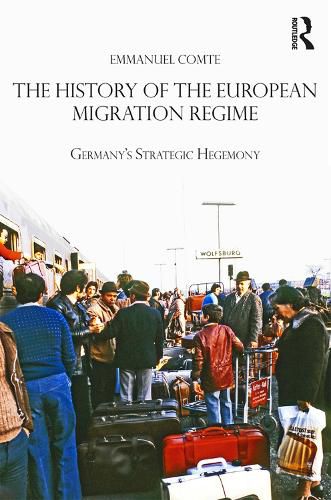Readings Newsletter
Become a Readings Member to make your shopping experience even easier.
Sign in or sign up for free!
You’re not far away from qualifying for FREE standard shipping within Australia
You’ve qualified for FREE standard shipping within Australia
The cart is loading…






After the Second World War, the international migration regime in Europe took a course different from the global migration regime and the migration regimes in other regions of the world. Cumbersome and arbitrary administrative practices prevailed in the late 1940s in most parts of Europe. The gradual implementation of regulations for the free movement of people within the European Community, European citizenship, and the internal and external dimensions of the Schengen agreements profoundly transformed the European migration regime. These instruments produced a regional regime in Europe with an unparalleled degree of intraregional openness and an unparalleled degree of closure towards migrants from outside Europe. This book relies on national and international archives to explain how German strategies during the Cold War shaped the openness of that original regime. This migration regime helped Germany to create a stable international order in Western Europe after the war, conducive to German Reunification and supported German economic expansion. The book embraces the whole period of development of this regime, from 1947 through 1992. It deals with all types of migrants between and towards European countries: unskilled labourers, skilled professionals, self-employed workers, and migrant workers’ family members, examining both their access to economic activity and their social and political rights.
$9.00 standard shipping within Australia
FREE standard shipping within Australia for orders over $100.00
Express & International shipping calculated at checkout
After the Second World War, the international migration regime in Europe took a course different from the global migration regime and the migration regimes in other regions of the world. Cumbersome and arbitrary administrative practices prevailed in the late 1940s in most parts of Europe. The gradual implementation of regulations for the free movement of people within the European Community, European citizenship, and the internal and external dimensions of the Schengen agreements profoundly transformed the European migration regime. These instruments produced a regional regime in Europe with an unparalleled degree of intraregional openness and an unparalleled degree of closure towards migrants from outside Europe. This book relies on national and international archives to explain how German strategies during the Cold War shaped the openness of that original regime. This migration regime helped Germany to create a stable international order in Western Europe after the war, conducive to German Reunification and supported German economic expansion. The book embraces the whole period of development of this regime, from 1947 through 1992. It deals with all types of migrants between and towards European countries: unskilled labourers, skilled professionals, self-employed workers, and migrant workers’ family members, examining both their access to economic activity and their social and political rights.